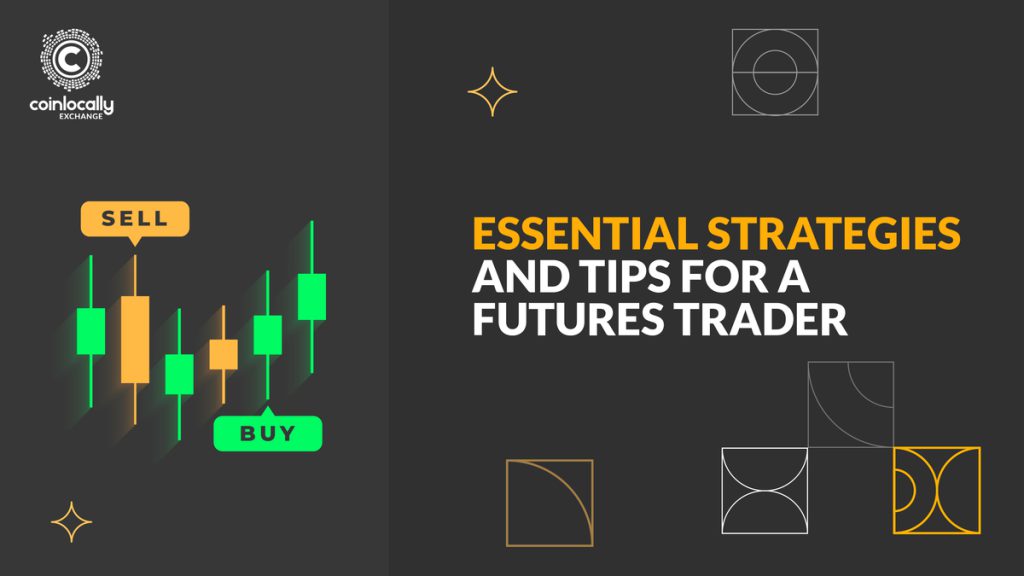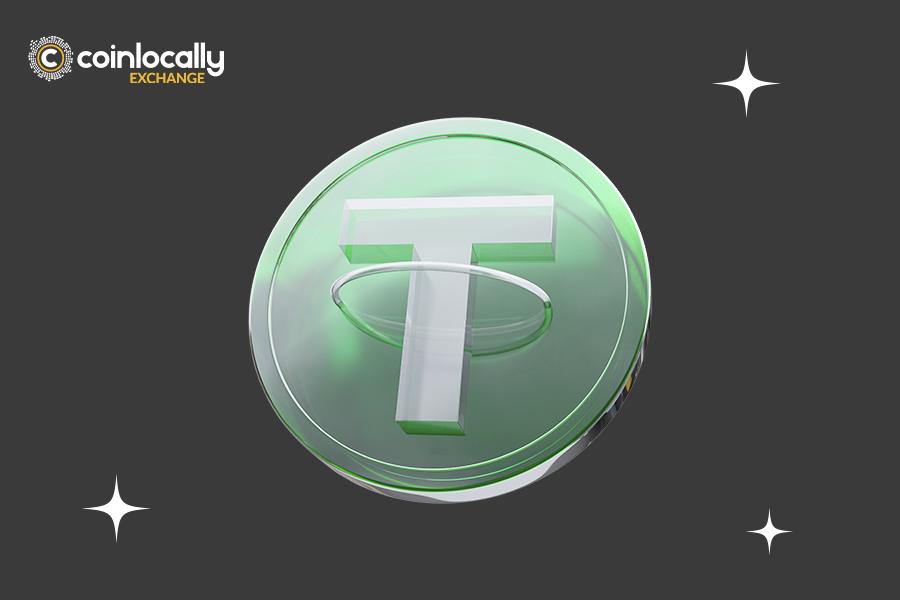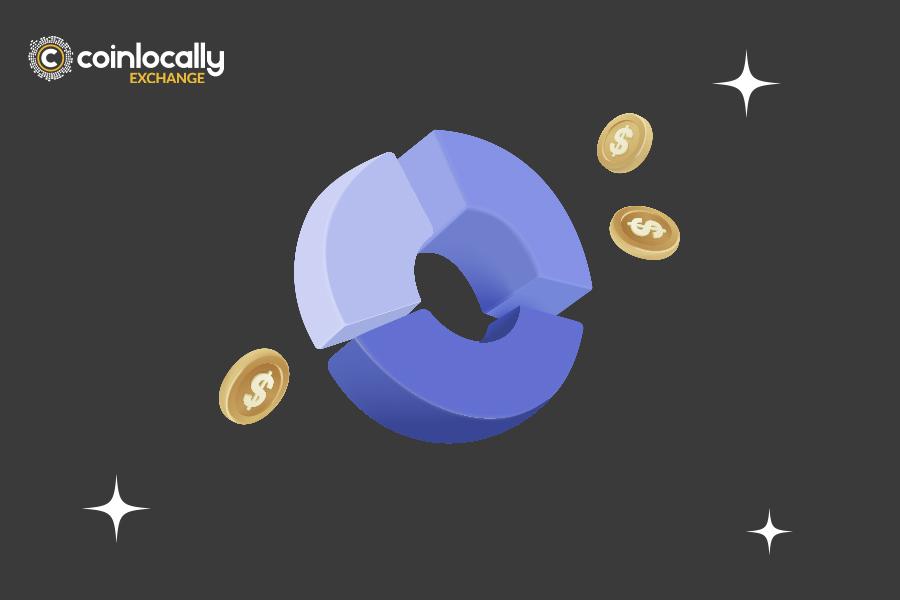A Futures trader is someone who engages in the buying and selling of financial contracts, known as futures contracts, to profit from price movements. Futures trading is a dynamic and complex field that attracts individuals seeking opportunities in financial markets. This article delves into the world of Futures trading, exploring the skills, strategies, and considerations that define a successful Futures trader.
Quick Getaway: Looking for a safe platform that offers the most secure cryptocurrency trading platform? Signup with Coinlocally and enjoy the best Crypto Trading Bot.
Table of Contents
• Understanding FuturesTrading
• Skills Required for Futures Trading
• 7 Tips for Every FuturesTrader to Consider
Understanding FuturesTrading
Futures trading involves contracts that obligate the Futures trader or buyer to purchase, or the seller to sell, an asset at a predetermined future date and price. These contracts cover various assets, including commodities, currencies, and financial instruments, allowing traders to speculate on the future price movements of these assets.
Skills Required for Futures Trading
1. Analytical Skills
A future trader needs keen analytical skills to interpret market data, trends, and patterns. Technical analysis, fundamental analysis, and sentiment analysis are crucial tools for making informed trading decisions.
2. Risk Management in FuturesTrading
A successful Futures trader prioritizes risk management. This includes setting stop-loss orders, determining position sizes, and calculating potential losses. Managing risk is integral to preserving capital and sustaining long-term success.
3. Discipline
Discipline is a cornerstone of Futures trading. A Futures trader must adhere to their trading plans, resist emotional impulses, and avoid making impulsive decisions driven by fear or greed. Discipline ensures consistency in executing strategies.
4. Market Knowledge
A deep understanding of the markets is essential. A Future trader stays informed about economic indicators, geopolitical events, and market news that can impact asset prices. Continuous learning is crucial in this ever-evolving landscape.
Strategies Employed by FuturesTraders
1. Trend Following
Many Future traders adopt trend-following strategies, aiming to capitalize on established market trends. This involves identifying and riding trends in asset prices, either upward (long positions) or downward (short positions).
2. Arbitrage
Arbitrage strategies involve exploiting price differentials between related assets or markets. A Futures trader may simultaneously buy and sell related contracts to capture profit from price inefficiencies.
3. Options Trading
A Futures trader may integrate options contracts into their strategies. Options provide flexibility and risk mitigation by allowing traders to hedge against potential losses or generate additional income.
4. Algorithmic Trading
With advancements in technology, algorithmic or automated trading has gained popularity. A Futures trader uses algorithms to execute pre-defined strategies, leveraging speed and efficiency in capturing market opportunities.
7 Tips for Every FuturesTrader to Consider
Enhance your knowledge of Futures trading with these seven strategies.
In the realm of future trading, achieving success can lead to substantial profits, but errors can be costly. Therefore, having a well-thought-out strategy before entering the market is crucial for a Futures trader. Here are seven tips for you:
1. Develop a Trading Plan
- Craft a detailed trade plan before establishing a position. This includes defining profit objectives and planning an exit strategy in case the trade turns unfavorable.
- Minimize the need for impulsive decisions during active trading by incorporating risk-management tools like stop-loss or bracket orders.
2. Protect Your Positions
- Implement an exit strategy in advance to guard against significant adverse movements.
- Utilize stop-loss orders and consider One-Triggers-Other (OTO) orders to automate protective measures.
3. Focus Wisely
- Avoid spreading yourself too thin by trying to follow and trade too many markets.
- Strike a balance between diversification and focus to effectively manage your trades and stay informed.
4. Trade at a Manageable Pace
- Start trading slowly, especially if you are new to Futures trading.
- As a Futures trader, you must avoid overcommitting by beginning with one or two contracts, allowing room for occasional drawdowns.
5. Think Long and Short
- Embrace trading opportunities in both rising and falling markets.
- Be open to “going short” in addition to “going long” to maximize potential opportunities.
6. Learn from Margin Calls
- Treat a margin call as a signal that you may be emotionally attached to a losing position.
- Consider exiting a losing position rather than injecting more funds or reducing open positions.
7. Exercise Patience
- Maintain a broader perspective and avoid fixating on every market fluctuation.
- Lengthen the duration of your trades to avoid being swayed by short-term market movements.
Remember, while these tips can provide guidance, thorough research, and continuous learning are essential for success for a Futures trader.
Day Trading Futures
Day trading Futures is a dynamic and fast-paced approach to engaging in financial markets. This strategy involves buying and selling futures contracts within the same trading day, aiming to profit from short-term price movements.
Day traders in the futures market capitalize on volatility, leverage, and intraday trends to make quick and frequent trades. The following explores some key aspects of day trading futures, including strategies, risks, and considerations.
Key Characteristics of Day Trading Futures:
This fast-paced and high-risk approach to trading requires a deep understanding of the key characteristics of day trading Futures to be successful. In the following, we will explore the essential elements of day trading futures and how they differ from other trading strategies.
1. Short-Term Horizon
Day traders hold positions for a very short duration, typically entering and exiting trades within the same trading day. This contrasts with other investment approaches that may involve longer holding periods.
2. Leverage
Day trading often involves using leverage to amplify trading positions. Futures contracts allow traders to control a large position with a relatively small amount of capital. While leverage can enhance profits, it also increases the risk of significant losses.
3. Intraday Trends
Day traders analyze intraday price movements and trends to identify opportunities. Technical analysis, chart patterns, and real-time market data are commonly used to make rapid trading decisions.
4. High Frequency of Trades
Day traders execute numerous trades within a single day, taking advantage of small price fluctuations. This high frequency requires quick decision-making and a disciplined approach.
Strategies for Day Trading Futures:
1. Trend Following
Day traders often follow short-term trends in the market, taking long positions during uptrends and short positions during downtrends. Technical indicators and moving averages help identify these trends.
2. Range Trading
Range-bound markets, where prices move within a defined range, provide opportunities for range trading. A Futures trader buys near support levels and sells near resistance levels, aiming to profit from price oscillations.
3. Breakout Trading
Breakout strategies involve identifying key support or resistance levels and entering trades when the price breaks through these levels. A Futures trader aims to capture momentum in the direction of the breakout.
4. Scalping
Scalping is a strategy where traders make small profits from minor price changes. A Futures trader is executed to capture small price increments, and positions are closed quickly.
Risks and Considerations:
1. Market Volatility:
While volatility presents opportunities for day traders, it also increases the risk of rapid price movements. A Futures trader must be prepared for unexpected market events that can lead to significant losses.
2. Leverage Risk:
The use of leverage in future trading magnifies both gains and losses. A Futures trader should manage leverage carefully and be aware of the potential for substantial financial exposure.
3. Emotional Discipline:
Day trading requires emotional discipline, as rapid market changes can trigger impulsive decisions. Successful day traders adhere to predefined strategies and risk management rules.
4. Market Data and Technology:
Timely access to market data and efficient trading platforms are essential for day trading. A Futures trader relies on real-time information and advanced technology to execute trades swiftly.
In summary, Day Trading Futures offers the potential for quick profits and active market participation. However, it requires technical skill, discipline, risk management, and the ability to make rapid decisions.
A Futures trader should approach day trading with a clear strategy, realistic expectations, and a commitment to ongoing education. As with any form of trading, understanding the risks and staying informed about market conditions is crucial for success in day trading futures.
Algorithmic FuturesTrading
Algorithmic Futures trading, also known as algo trading or automated trading, has revolutionized the way participants engage in financial markets. This sophisticated approach involves using computer algorithms to execute trades based on predefined rules and strategies. The following explores the key aspects of algorithmic Futures trading, including its benefits, strategies, and considerations.
Key Characteristics of Algorithmic Futures Trading:
1. Automation:
Algorithmic trading relies on computer programs to automate the entire trading process. From market analysis to order execution, algorithms handle the tasks without human intervention.
2. Speed and Efficiency:
One of the primary advantages of algo trading is its speed. Algorithms can analyze market data and execute trades in fractions of a second, enabling market participants to capitalize on fleeting opportunities.
3. Quantitative Analysis:
Algorithms use quantitative analysis, statistical models, and mathematical computations to identify trading signals. These signals guide the decision-making process, allowing for systematic and data-driven trading.
4. Diversification:
Algo trading facilitates the simultaneous execution of multiple trades across different markets and assets. This diversification helps manage risk and capture opportunities in various financial instruments.
Benefits of Algorithmic Futures Trading:
1. Speed and Precision:
Algorithms execute trades with unparalleled speed and precision, reducing the impact of market fluctuations during order execution.
2. Elimination of Emotional Bias:
Automated trading removes emotional biases from decision-making. Algorithms stick to predefined rules, eliminating the impact of fear, greed, or other emotions that can influence human traders.
3. Backtesting and Optimization:
A Futures trader can backtest algorithms using historical data to assess their performance under various market conditions. This allows for optimization and refinement of strategies before deploying them in live markets.
4. 24/7 Availability:
Algorithmic trading operates 24/7, responding to market changes across different time zones without the need for constant human supervision.
Common Algorithmic Trading Strategies:
1. Trend Following:
Algorithms identify and capitalize on market trends by executing trades in the direction of prevailing price movements.
2. Mean Reversion:
This strategy involves algorithms identifying overbought or oversold conditions and executing trades with the expectation that prices will revert to their historical average.
3. Arbitrage:
Algorithms exploit price differences in related assets or markets, executing trades to capture profit from inefficiencies.
4. Statistical Arbitrage:
Using quantitative models, algorithms identify mispricings between related assets and execute trades to capitalize on statistical relationships.
Considerations for Algorithmic Futures Trading:
1. Technology Infrastructure:
A robust and reliable technology infrastructure is essential for algorithmic trading. Low-latency connections, powerful servers, and efficient execution platforms are crucial components.
2. Risk Management:
Despite the benefits, algorithmic trading carries risks. Effective risk management strategies, including position sizing and stop-loss mechanisms, are vital to safeguard against unexpected market movements.
3. Regulatory Compliance:
Algorithmic trading is subject to regulatory oversight. Traders must ensure compliance with relevant regulations and adhere to market rules to maintain ethical and legal trading practices.
4. Continuous Monitoring:
While algorithms operate autonomously, continuous monitoring is necessary. Market conditions can change, and algorithms may require adjustments to remain effective.
Conclusion
The world of Futures trading is dynamic and multifaceted, requiring a combination of analytical skills, risk management, discipline, and market knowledge for success. Whether engaging in day trading or algorithmic trading, traders must carefully consider the strategies and tips outlined in this article.
From developing a well-thought-out trading plan to embracing the use of technology for automated trading, the key to success lies in continuous learning, emotional discipline, and a clear understanding of the risks and opportunities inherent in futures trading. By adhering to these principles and remaining informed about market conditions, futures traders can navigate the complexities of the financial markets with confidence and agility.




![FTM to Sonic Price Prediction After Upgrade [All Possible Scenarios]](https://blog.coinlocally.com/wp-content/uploads/2025/01/FTM-to-Sonic-Price-Prediction-After-Upgrade-All-Possible-Scenarios-Custom.jpeg)

